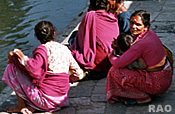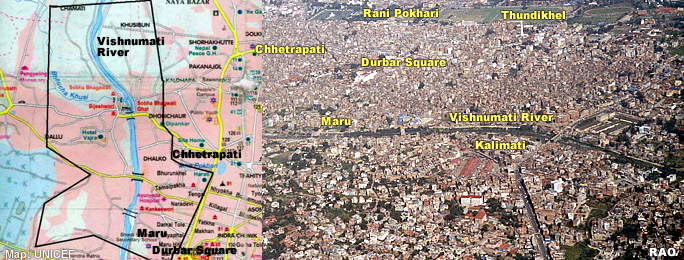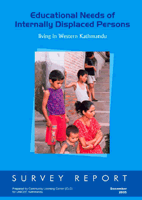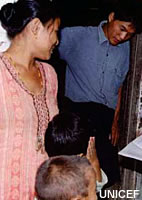
|
| Social Life |
|
|
|
|
 |

|
| UNICEF report: "Educational Needs of Internally Displaced Persons (IDPs)" |

|
| UNICEF report: "Educational Needs of Internally Displaced Persons (IDPs)" - Contents |
|
|
| Foreword
iii Preface iv 1 . Introduction 8 1.1 Impact of the conflict on children's education 8 1.2 What is the definition of IDPs? 9 1.3 Overview of the scope of displacement 9 1.4 Reasons for gaps in data collection and needs assessment 9 1.5 Barriers to access to schooling in urban areas 11 2 . Rationale for survey and justification of site selection 12 3 . Objectives 13 4 . Methods of survey 14 5 . Selection and coverage of sample areas 15 6 . Major Reasons for Migration 16 7 . Identification of IDP IDPs s and their issues 17 8 . Identification of IDP students and education related issues 18 9 . Classification of IDP IDPs 19 10. Findings indings of the survey 20 10.1 Schooling 20 10.2 Employment 21 10.3 Shelter 23 10.4 Pattern of migration 23 11. Recommendations 25 11.1 P Practical measures 25 |
-
Financial support to children up to Grade V 25 - Special provision for IDP/poor students above primary school 26 - Non-formal education 26 - Tutorial sessions 27 - Health care programme including HIV/AIDS prevention 27 - Introduction of peace education in the curriculum 27 - Harmony between the communities 28 - Income generating activities targeting guardians,especially women 28 11.2 Advocacy and policy 29 - Recommendations to the government: 29 - Recommendations to humanitarian organisations: 30 References 31 Appendix |
| Source:UNICEF 2006 |

|
| more information |
|

|

